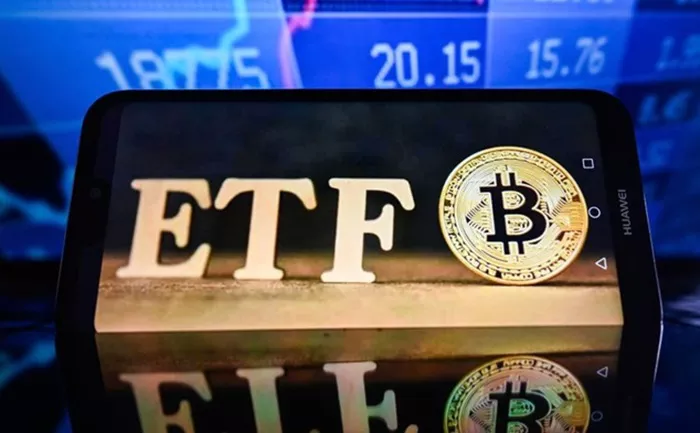Last week, the U.S. Bitcoin spot ETF experienced a notable net inflow of $457 million. Although this represented a decrease from previous weeks, it highlights the continued strong demand for Bitcoin ETFs, with the total net asset value (NAV) reaching $10.97 billion. The average daily trading volume was recorded at $5.23 billion. Notably, BlackRock’s Bitcoin ETF (IBIT) was a significant contributor, with a staggering $1.446 billion in net inflows.
However, not all Bitcoin ETFs were in the green. Seven Bitcoin ETFs collectively experienced net outflows last week. Among the worst performers were Fidelity’s FBTC, which saw a net outflow of $292 million, resulting in a NAV of $19.82 billion, and Grayscale’s GBTC, which had a net outflow of $248 million, bringing its NAV down to $20 billion. Other funds that experienced substantial outflows included Ark Invest and 21Shares’ ARKB and Grayscale’s Bitcoin Trust BTC, both with $171 million in outflows. This trend signals a shift in investor preferences, though the inflows into Bitcoin ETFs remain robust overall.
The Ethereum market also saw positive growth last week, with the U.S. Ethereum spot ETF attracting a net inflow of $62.7 million. This brought the total NAV to $1.215 billion, with an average daily trading volume of $912 million. On December 19, the Ethereum ETF set a historical record, surpassing $1.26 billion in trading volume for the day. BlackRock’s ETHA ETF was the largest contributor, attracting $143 million in inflows, while Fidelity’s FETH added another $26.1 million.
Despite these gains, some Ethereum ETFs experienced outflows. Grayscale’s ETHE saw a significant net outflow of $99.8 million. Overall, the U.S. Ethereum ETF market appears strong, driven by investor interest and institutional involvement in Ethereum-related products.
On the international front, the Hong Kong Bitcoin spot ETF faced its third consecutive week of capital outflows, with a net outflow of 52.74 Bitcoins. This resulted in a reduced NAV of $45 million. This trend reflects broader market uncertainty and investor caution in Hong Kong’s crypto ETF market.
However, the Hong Kong Ethereum spot ETF bucked the trend, experiencing a net inflow of 2,630 ETH, increasing its NAV to $6.418 million. On December 20, the fund saw a single-day inflow of 1,550 ETH, which marked the third-largest inflow in the fund’s history. These contrasting trends in Bitcoin and Ethereum ETFs highlight differing investor sentiment across markets.
Turning to options and derivatives, the U.S. Bitcoin spot ETF options market is showing increased investor activity. As of December 20, the nominal total trading volume of Bitcoin spot ETF options reached an impressive $1 billion, with a long-to-short ratio of 2.38. This suggests that bullish sentiment is prevailing among investors, despite market fluctuations. The total open interest in these options as of December 19 was $9.78 billion, with a long-to-short ratio of 1.87. This further suggests that investors are betting on Bitcoin’s continued upward momentum.
Implied volatility for Bitcoin options also remains elevated at 64.76%, indicating that the market anticipates continued price fluctuations and possible volatility, particularly in light of recent regulatory developments and potential market-moving news.
Several new developments have emerged in the crypto ETF landscape that could shape the market in the coming months. GraniteShares, an asset management firm with over $10 billion in assets under management (AUM), has filed for a new leveraged ETF that will track the stock prices of crypto-related companies such as Riot Platforms, Marathon Digital, MicroStrategy, and Robinhood. This new product will provide investors with both long and short positions, allowing for a 2x daily return based on the performance of underlying stocks. For example, if Riot Platforms stock rises by 1%, the GraniteShares 2x Long RIOT ETF will rise by 2%.
Additionally, Nexo 7RCC has filed an S-1 amendment to launch the world’s first Bitcoin and carbon credit futures mixed ETF. The fund, which will allocate 80% of its portfolio to Bitcoin and 20% to carbon credit futures, is designed to track carbon trading systems such as EU carbon emission allowances. This fund is being seen as an ESG-friendly version of a Bitcoin ETF, and its price movements will be influenced by both Bitcoin prices and carbon credit futures.
The U.S. Securities and Exchange Commission (SEC) has also approved Hashdex’s Nasdaq Crypto Index ETF, which will allow investors to gain indirect exposure to both Bitcoin and Ethereum through traditional financial markets. This approval marks another milestone for crypto ETFs, with Hashdex’s fund set to list on major exchanges such as Nasdaq and Cboe BZX.
According to Glassnode, the magnitude of Bitcoin’s pullbacks in its ongoing bull market is gradually decreasing, signaling stronger institutional interest and increased demand for Bitcoin spot ETFs. The firm notes that the deepest pullback in the current cycle was 32% (on August 5, 2024), but most pullbacks have been around 25% from previous highs, reflecting greater resilience in the market.
Bloomberg’s ETF analyst Eric Balchunas predicts a wave of new crypto ETFs next year, including BTC + ETH combination ETFs, followed by others such as LTC, HBAR, and XRP/Solana. He suggests that demand for Ethereum ETFs will grow significantly in the coming months, and we may see even more diverse offerings on the market.
Meanwhile, K33 Research Director Vetle Lunde reports that the total assets under management (AUM) for U.S. Bitcoin ETFs ($129.3 billion) have now surpassed those of gold ETFs ($128.9 billion). This milestone is a testament to Bitcoin’s growing legitimacy as an asset class.
Read more:

